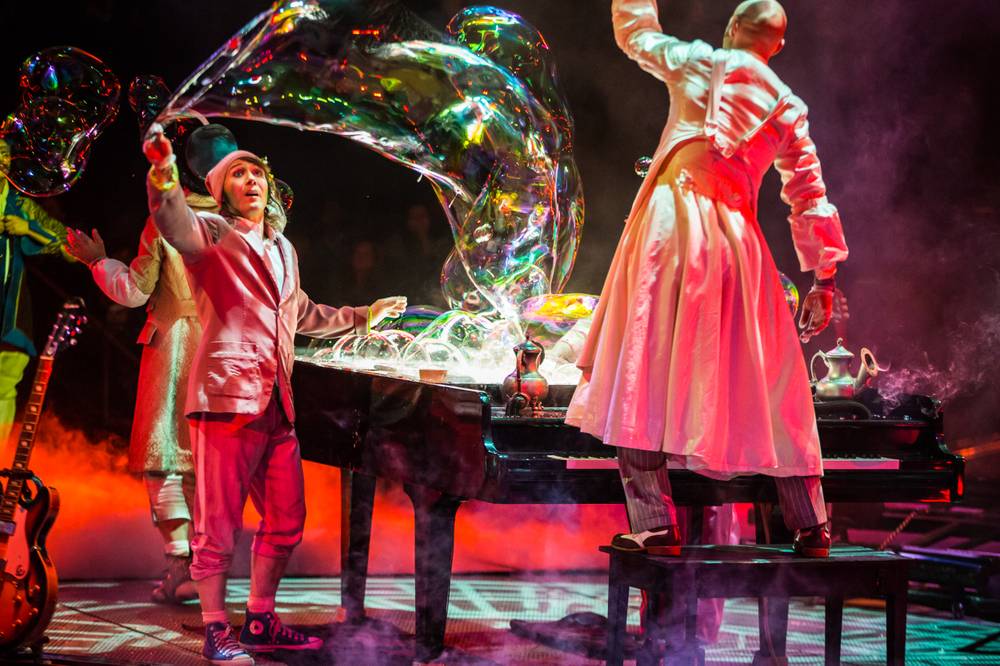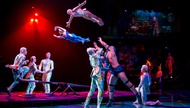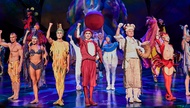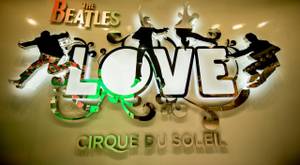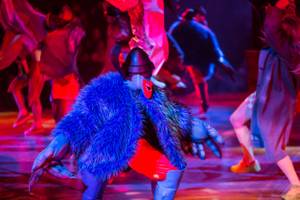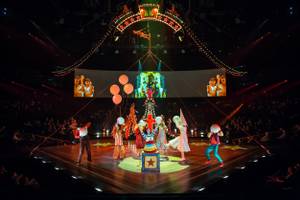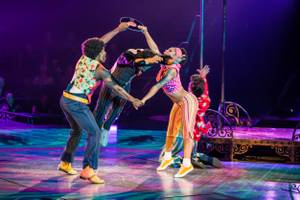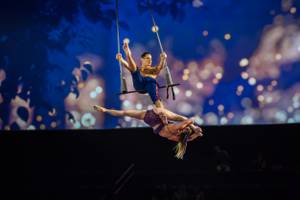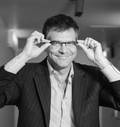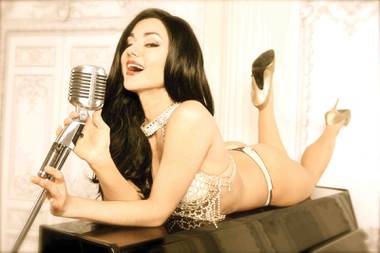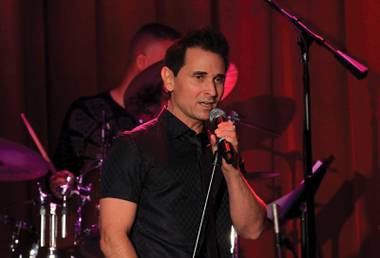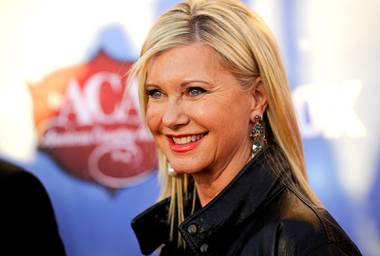It’s a day in the life for Giles Martin. A caretaker of The Beatles’ musical legacy is spending another afternoon inside Love Theatre at the Mirage.
Martin talks of the enormous responsibility bestowed upon him to help remake a hit show featuring some of the greatest music ever recorded, as performed by the peerless artists of Cirque du Soleil. As Martin speaks, the haunting voice of John Lennon calls out through the sound system, his otherworldly “aaaaah-aaaaah-aaaah-aaah” from “A Day in the Life” acting as this conversation’s soundtrack.
“We felt that if we were going to preserve the integrity of the show, we needed to do something new,” says Martin, whose father, the producer Sir George Martin, recorded all of The Beatles’ studio work from 1962 to 1970 and was instrumental in Love’s original soundscape. “We first did this show 10 years ago, and it was groundbreaking. It still is groundbreaking, but it was 10 years ago.”
As the orchestra’s crescendo builds to the song’s legendary culmination, Martin finishes his thought. “We have been fighting for permission to do something with this show,” he says, the symphony’s strings rising to meet his words. “Our view was that it looked old and sounded old and needed to be more vibrant. That was the word we used—vibrant.”
As punctuation, the sonic vibrancy of four pianos crashing in unison fills the theater. CHA-CHUNG! You’ve got to love that Beatle timing.
*****
Love has been dark for several weeks undergoing its first full-scale upgrade, returning to the stage on Thursday night in a “refreshing” period that should carry through July.
Impressively, Love is 10 years old this summer, a remarkable achievement for myriad reasons, chief among them that the show has outlived the eight-year recording career of The Beatles themselves. It opened in June 2006, a highfalutin event attended by Paul McCartney, Ringo Starr, Yoko Ono and Olivia Harrison, both Martins, Cirque founder Guy Laliberté and such rock royalty as Brian Wilson, Joe Walsh and Steve Van Zandt. At one point, McCartney shared a photo op with the theater’s original overlords, Siegfried & Roy, as The Doors’ Robby Krieger looked on.
No doubt, Love was mind-blowing in its attention to detail, with all the hidden audio and visual gems from throughout The Beatles’ career—an aerial, white-gowned Lucy during that famous number; a pregnant Lady Madonna tap-dancing in the rain with her beau; a vintage VW Beetle breaking apart near the end of the performance. The sound system of more than 6,000 speakers built into the seats had never been attempted in Las Vegas before, and one of the show’s signature scenes was a white silk drape stretched across the lower half of the audience during the mashup of “Within You Without You” and “Tomorrow Never Knows.”
The show is an unqualified hit, one of the top sellers staged by any production company on the Strip, typically hitting between 75 and 90 percent capacity through a decade at the Mirage. Exit surveys put it at the top of Cirque shows in Las Vegas for its positive fan feedback, and the band’s performance on streaming platform Spotify (70 million streams in just three days in December) reminds us that The Beatles never go out of style.
But as has been proven during the company’s 25-year run in Las Vegas, Cirque is forever chasing its own universally high standards. Look at the shows that have followed Love, particularly Michael Jackson One and its aggressive choreography, lavish costumes, blaring pyrotechnic scenes, spring-activated stage and hologram of Jackson. The artists from Love have looked at that show, and the rotating stage in the $165 million KÀ at MGM Grand, with a hint of envy.
So the Love team convened last year, said, in effect, “You say you want a revolution?” and went to work. First, Martin and co-creator Dominic Champagne, the Cirque artistic director who helped envision the original show, returned to the theater with wide-open minds. Which is to say, they pretended to be totally unimpressed by what they were watching.
“Dominic and I came to the show as if we were two guys who didn’t particularly like Cirque du Soleil or The Beatles,” Martin says, laughing at the night they were nearly tossed by an usher who didn’t know they were Love’s co-creators. “We watched the show and we tore it apart … we began to realize we needed to do something where we could completely refresh the show, but not lose the heart of it.”
The first move was apparent as the men stared at the show’s floor in the middle of the 360-degree theater. The spotlights created an unintended glare, and that territory on the floor was ripe for a void in the show—projected images of The Beatles.
“We sat there and watched the floor, looking at it, and the funny thing was that we started walking around the theater trying to figure out how many people would be able to see projections on the floor,” Martin says. “You might not think much of it, but that was a huge overhaul. Massive.”
Not just massive in upgrading the technology. The use of The Beatles’ faces in the show is a shift in philosophy from both the band members and Cirque officials.
“We’re adding more Beatles,” Martin says. “In this backdrop of the show was a funny marriage, where there was no kissing (laughs). The Beatles and Cirque got together, but Cirque didn’t want much Beatles imagery, even just an album cover. No pictures of the boys, no seeing them at all until the ending segment,” he explains of the original approach.
“We felt them in the show, certainly, musically, but one of the rules 10 years ago was not to use them as much visually,” Champagne says. “We used shadows. We used voices. But now they are going to be more present in the show and bring in some visually immersive experiences and some spectacular shots.”
As Martin says, the band is so iconic, and “so damn popular, still.” No doubt fans want to feel its presence more powerfully.
*****
The most evident shift in the order of Love’s acts is at the top, where “Twist and Shout” replaces “I Am the Walrus.” This is an override of sorts, of an old McCartney directive. “Paul wanted a strong John song at the top, so we went with a strong one, which was ‘Walrus,’” Champagne says. “But we were still in the early years, and that was quite a tough moment in the show to explain, with a weird setup while trying to explain the impact Elvis and rock ’n’ roll had on those guys.”
As Martin explains, the first scene in the revamped show culminates with a bombed-out Britain in World War II, and arriving from the rubble is this rollicking sound. “You hear the voices, the ‘Aaah, aaah’ as the song starts, and we have the Cavern Club underneath, and rock ’n’ roll bursts out onto the stage,” Martin says, his eyes widening. “That becomes ‘Twist and Shout,’ but there’s a very fast shift, going from 1940 to 1963, making that jump in about 20 seconds, so there’s the held note of ‘A Day in the Life’ piano and a lot of other stuff I’ve added, and then these voices emerge in a way that you can’t immediately tell that they are voices.”
He pauses and says, “It’s a very weird process, isn’t it?”
Unseen but also significant will be upgrades to the theater’s sound system. Martin says he “begged and bartered” for new speakers throughout the venue. “When they were originally done, it was innovative to have three speakers in a seat. But they were not great quality, and we now have units that are much better quality, new speakers all the way through the theater.”
The master audio was also totally remixed, once more by Martin, who is as adept with digital sound as his father was with audiotape. “We went back and remixed all the No. 1s (for the album Beatles 1) last year, and they sound a lot better than they did even 13 years ago. We rebuilt the entire show from the better-sounding quality audio. All of the original music was redone, and we now have the very best possible sound in this theater.” They also have a built-in desk where Martin can toggle between original and upgraded tracks, allowing for the show to be remixed anytime.
Songs that make it as far as mixing have gone through quite a process. Once a number is selected, a place in the production is created—but that doesn’t always bring a song into the show. “Birthday,” the rowdy treatment from the White Album, was among those tried and tossed. Closest to reaching reality was “Let It Be,” near the end of the show in place of the unfailingly effective sing-along, “Hey Jude.”
“We had to make this choice, and I nearly put ‘Let It Be’ in the show,” Martin says, “but the problem with ‘Let It Be’ is, it doesn’t crescendo, it doesn’t rise the same way ‘Hey Jude’ does, which allows you to move to another moment in the show.”
Champagne also talks of a restructured “Yesterday” being prepped for the new version, saying, “I was never really happy at how we never really served what that masterpiece of a song deserved,” he says. “Now we are doing it in a very simple way, treating it with some improved acrobatics here and there, building on our strengths. You will see new advancements, without reinventing, with ‘Lady Madonna’ and ‘While My Guitar Gently Weeps.’”
The show’s choreographers, Nappytabs founders Napoleon and Tabitha D’umo, actually led the development of an entire new number behind “Let It Be” before the project was shelved.
“It was quite a beautiful number, and we were very excited about it, but we did go back to ‘Hey Jude’ because of its beautiful buildup to the finale,” Tabitha says. “It does not break down.”
Napoleon adds, “Maybe someday we’ll put it on YouTube and say, ‘See what we were going to do!’ … I am just kidding about that.”
But seriously, the artists in Love need to be versatile enough to perform in mediums totally different than those in which they were trained. That’s one of the Cirque hallmarks. An inline skater from the “Help” segment could easily find his way into “Twist and Shout,” dancing, not skating.
“That has actually happened, where one of the inline skaters who is not a professional dancer at all is with professional dancers,” Napoleon says. “All of our dancers have acrobatic movement.” Tabitha cuts in with, “Cirque has such individuality in each act, you have to be able to adjust to everything—you have to translate to other acts, otherwise you would need 400 dancers in a show.”
Artistically, Cirque is as flexible as the band that inspired Love. That’s why this once “no kissing” marriage has lasted. “I have felt this period as being between two giants,” Champagne says. “The Beatles and Cirque. I am almost the impostor, like maybe Steven Spielberg should be the one doing this, where the artists are saying, ‘Who is this f*cking guy, coming in and saying he does not like this or that in a show that is selling out every night?’ I am coming in and shaking the tree of a show that is working.”
But Champagne has the permission of a Cirque-Beatles-MGM Resorts team that has grown into what he calls “a real family.” “When you are working with great artists, and McCartney is a great artist, like Mozart, you feel good about the creative process,” he says. “I knock on wood, because I do not want to feel too good before opening night, but it is working.”
Champagne recalls a story George Martin has told many times through his history of chronicling The Beatles’ legacy: He visited John Lennon and Yoko Ono in New York several years after the band’s breakup, and Lennon said he wanted to re-record everything the band ever did. “Even ‘Strawberry Fields.’ Especially ‘Strawberry Fields,’” Champagne says, smiling. “He was talking about how unsatisfied he was about The Beatles’ music. Can you imagine? Now I don’t want to put myself as John Lennon, but I kind of felt that with Love.”
And his co-conspirator shares in that spirit. “I wrote to my dad, who is 90 now, and I told him I am working with artists who were born after John Lennon died. Isn’t that amazing?” Martin says. “When we started this, people really were saying, ‘What the hell are you doing? I mean, really, what the hell are you doing with this Cirque show in Vegas?’ But there is so much heart and soul in this show. We want everybody to be in this room, and we want to make it even more about The Beatles.”
The Beatles Love Thursday-Monday, 7 & 9:30 p.m., $79-$192. Mirage, 702-792-7777.
